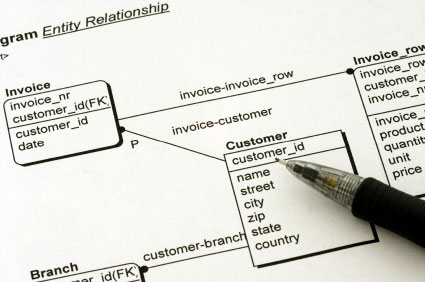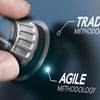SoftRoots Consulting Services
 Architectures
Architectures
Architecture is based on the technologies, frameworks, and key components targeted for a new solution initiative, or one that needs to be supported for an existing
solution environment. The architecture will often dictate what is and what is not possible within the scope of a solution's capabilities. Although,
architectural extensions (e.g., technology bridges) can extend a solution's scope, other factors will often be introduced as a result (e.g., performance impact),
which requires further evaluation to determine the "right-mix" of technologies and frameworks for a particular solution. Additionally, a solution's key capabilities will play a crucial role in selecting the best technologies based on their
strengths and limitations.
The importance of considering the architecture(s) advantages as well as their limitations for a potential solution is a key factor that can determine a solution's success,
and if it will be one that can address your business needs in the future. The specific architecture(s) chosen may also determine if a solution will have the capabilities
that can be extended or not, if it will support legacy systems and/or applications, and if the solution will likely require significant or minimal maintenance "down-the-road".
 Data Schemas
Data Schemas
Data schemas may have a critical impact on the capabilities and success of any solution that requires and/or utilizes the underlying data. A data schema is like a
valuable map that defines the entity relationships and the related data to support a given solution environment. This map is referred to as an entity relationship
diagram (ERD), which graphically represents the data relationships, entities, and elements for specific sector of a business. Typically, multiple data schemas exist
to support an overall corporate environment. These are usually designed to support overarching business operations and/or requirements (e.g., data sharing, security,
etc.) for the corporate environment.
Data schemas and/or data structures may already be in place within a corporate environment, which often facilitates solution development. To more-fully utilize a corporate's existing data assets, the importance of adhering to existing data schemas (ERDs) when
developing new solutions.
 Solution Designs
Solution Designs
Successful business applications and/or enterprise solutions do not happen by
chance. Having a clear and concise understanding of the business needs, related requirements, data and design constraints, development capabilities, as well as the available
resources and technologies are essential. Additionally, component interfaces are another important factor to support interoperability and exchange of component data with
other components and/or applications within a given solution environment. A solution architect will consider these and various other aspects of the architecture and technologies
encompassing a solution, which will define and describe the high-level design for the solution that will effectivly address and resolve a business problem.
Typically, it's the solution architect that will translate the business case requirements into a meaningful architecture that will consists of different blocks that make-up
the overall solution design. Through our wide-range of consulting services, we can help you select and implement a strategy that is comprehensive yet practical, while providing
you with the services and solutions to effectively address your business concerns.
 Technologies
Technologies
Technologies - If there's one over-arching factor that continues to change, and would likely affect the overall success of a development project, it would have to be
technology. Technologies are changing at rapid pace today, and will continue as we build upon our technological advancements. Software development technology is an area that has certainly experienced much change over the last 10 years as
a result of the advancements in the underlying technologies and frameworks. Understanding how related technologies affect the scope of development, the potential for reuse, as
well as available capabilities to support a solution are crucial factors for success.
Some important factors to consider when selecting potential technologies for a solution include;
- Compatibility - Is it comaptible with existing technologies that may be desired for the solution.
- Functionality - Can the functional capabilities of the technologies meet your requirements and/or the business needs.
- Flexibility - Can it be easily modified, integrated with other software, extended upon, and how quickly can it adapt to change.
- Maintainability - Would it require significant costs to maintain it, does it support reuse, and is it a good fit with the skill set of your IT staff.
- Supportablity - Is the technology currently active and being supported by a team with scheduled or planned updates.
In today's fast-pace changing world, it's vitally important that organizations base their information architectures and supported technologies on sound strategies for tomorrow.
Consulting Services
Professional
Professional consultants can help resolve technical challenges, and communicate with your business representatives.
Knowledgeable
Our consultants are Knowledgeable about a wide-variety of technologies to address your pressing business challenges.
Experienced
Having the "know-how" and "hands-on" Expertise to support and address the technical road-block issues.
Reliable
Reliable consultants help minimize the frustrations that can occur with service-oriented businesses.
Insightful
Valuable Insight may be crucial when addressing technical issues impacting the success of development initiatives.
Quality-Oriented
Our focus of providing Quality-Oriented services helps to increase customer satisfaction, while minimizing disappointments.








